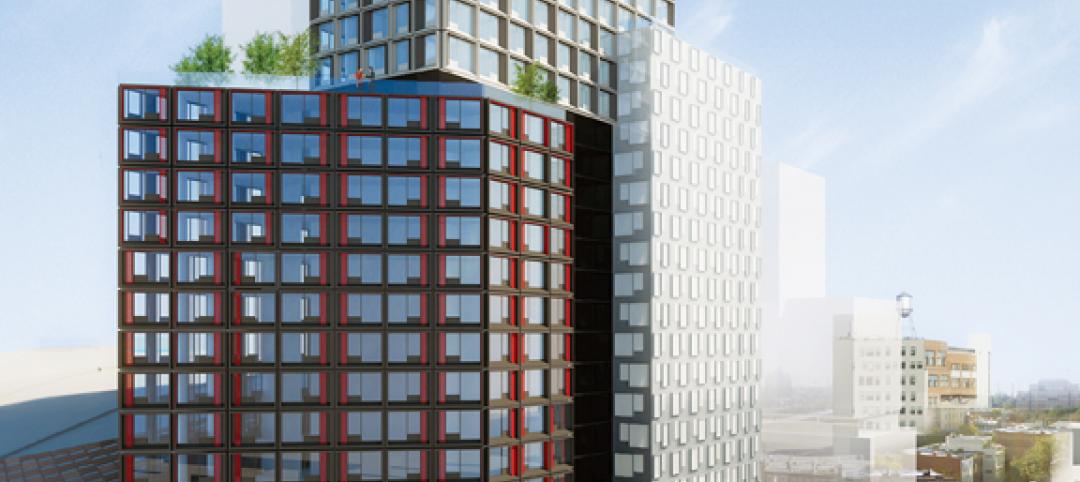Ken Martin, AIA, NCARB, has joined Leo A Daly to lead its Dallas office as Vice President and Managing Partner.
Most of Martin’s 25-plus-year career in design, planning, and management has focused on hospitality, which happens to be the Dallas office’s largest market. He joins Leo A Daly from DLR Group, where he was that firm’s hospitality and convention center expert. He reports to COO John Kraskiewicz.
Martin assumes his new post at a time when Leo A Daly has several large-scale hospitality-design projects in the works or just completed. These include the five-star 285-room Hotel Talisa in Vail, Colo.; the 582-room Ritz-Carlton Orlando Grande Lakes in Florida; and the 12-story 333-room Marriott Downtown Omaha in Nebraska, which opened last month as the first phase of that city’s entertainment Capitol District.
“Hospitality, I would argue, leads a lot of innovation,” says Martin in a video that Leo A Daly released to announce his hiring. “You cannot be reactive in this business.”
He praises his new employer as “one of the preeminent design firms in the hospitality industry,” and talks about the importance of sustainability and meeting guest expectations in hospitality design.
In a recent article he wrote for Hotel Business Review, Martin shared his thoughts about adaptive reuse as “a key piece of many [hotel] brands’ strategy,” and how authenticity in the redesign of existing buildings is “something of the Holy Grail.” On such projects, Martin said he asks the following questions to guide his teams’ designs: “What has that neighborhood been? Where is it going? Culturally, what are the drivers, and who are our local patrons going to be? What do they value? Who are the guests, why are they traveling to this city (or this neighborhood), and what are they looking for? That is to say: How do you integrate?”

Ken Martin was considering his professional legacy when, at 50, he switched firms. Image: Leo A Daly
Martin began his career as a museum exhibit designer for University of New Mexico, where he earned a bachelor’s degree in architecture. He spent nearly 27 years with DLR Group, rising to the level of Principal and National Hospitality Leader. One of the projects he was working on for DLR before he left was the renovation of the 16-story, 250-room Laylow Hotel by Marriott Autograph in Waikiki, Hawaii.
The 50-year-old Martin tells BD+C that several factors drove his decision to switch firms. For one thing, he and his wife are recent empty nesters, which gave them flexibility to relocate.
Martin was also giving more thought to his professional legacy. “I know there are is a finite number of projects I’ll get to do. So you start to ask yourself—blue sky—how can I make the biggest impact?”
He became aware that Leo A Daly was looking for a managing principal as Patricia Miller, its corporate director of hospitality, was moving into a global practice leader role for the firm. During the interview process, Martin was impressed with the projects that Leo A Daly was working on “that hint at a new level of design for the firm. This is a place where I can do signature work.”
He says that he brings a different approach to architectural programming and design, having been on the front end of DLR’s large conference center/hotel projects.
Leo A Daly is strong in the civic market. And there are other specialties across its 30 offices “that are begging to be infused with hospitality design and energy,” says Martin. The convention center/hotel sector is one of these; global healthcare and aviation are two others.
“Enlisting the strength of our hospitality teams in those projects and pursuits is a great avenue to doing great work,” says Martin.
Related Stories
| Aug 8, 2012
BD+C wins six B2B journalism awards
BD+C wins two national awards, three regional awards, and a regional Graphical Excellence award.
| Aug 8, 2012
BIM’s future up in the cloud
The AEC industry is on the cusp of a still more significant evolution with cloud computing.
| Aug 8, 2012
Giants 300 Sports Facilities Report
BD+C's Giants 300 Top 25 AEC Firms in the Sports Facilities sector.
| Aug 8, 2012
Giants 300 Science & Technology Report
BD+C's Giants 300 Top 25 AEC Firms in the Science & Technology sector.
| Aug 7, 2012
Pioneering revival
Financial setbacks didn’t stop this Building Team from transforming the country’s first women’s medical school into a new home for college students.
| Aug 7, 2012
Shedding light on the arts
Renovating Pietro Belluschi’s Juilliard School opens the once-cloistered institution to its Upper West Side community.
| Aug 7, 2012
How to win more state and local government projects
With a huge building stock at their disposal, state and local governments can be attractive clients, especially in these difficult economic times.
| Aug 7, 2012
McCarthy tops out LEED Platinum-designed UCSD Health Sciences Biomedical Research Facility
New laboratory will enable UCSD to recruit and accommodate preeminent faculty.
| Aug 7, 2012
Pankow names Lum new CEO
Lum joined Pankow in 1980 in Hawaii and has held leadership roles in Pankow’s Honolulu and Northern California regional offices and was appointed president of the firm in 2009.
| Aug 7, 2012
Suffolk Construction builds new Boston Tea Party Ships & Museum
Construction management firm links history with the future by building museum using state-of-the-art virtual models and BIM technologies.

















